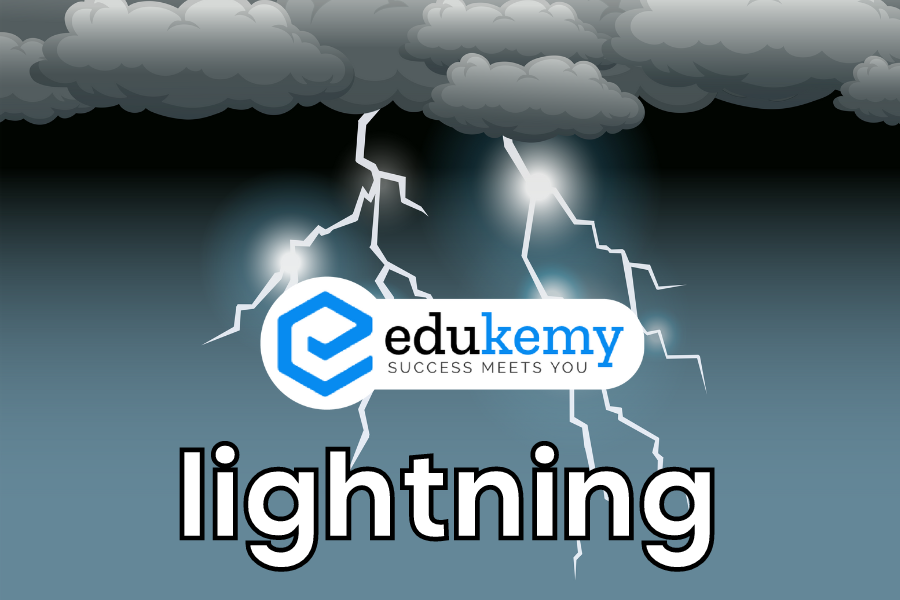
Lightning is a natural phenomenon that has fascinated and awed humanity for millennia. However, beyond its captivating beauty, lightning poses significant threats and dangers. Understanding the causes of lightning is essential in comprehending the risks it presents. Lightning occurs when there is an electrical discharge between positively and negatively charged regions within a thundercloud or between the cloud and the ground. Factors such as atmospheric instability, moisture content, and temperature differentials contribute to the formation of these electrical charges. While lightning itself can be mesmerizing, its associated threats are severe and diverse, ranging from wildfires and property damage to injury and loss of life. Thus, a deeper exploration of the causes of lightning is crucial in mitigating the risks and ensuring safety in the face of this powerful natural phenomenon.
Answer
Introduction:
Lightning is an electrical discharge resulting from an imbalance between storm clouds and the Earth, marked by a flow of high electric voltage and current. Understanding its causes and associated threats is crucial for mitigating its impact on human lives.
Body:
Causes of Lightning:
- Temperature-Induced Condensation: Rising temperatures cause water vapor to condense in clouds, forming minute ice crystals.
- Ice Crystal Accumulation: These ice crystals expand and gain weight, eventually tumbling to the ground.
- Electron Release after Collision: Collisions among ice crystals release electrons, triggering a chain reaction akin to electric sparks.
- Positive and Negative Charge Formation: The upper cloud layer becomes positively charged, while the middle layer turns negatively charged.
- High Electric Potential: One to ten billion volts separate the electric potentials of these layers.
- Massive Current Flow: A rapid flow of current, ranging from 100,000 to one million amperes, occurs between the charged cloud layers.
Threats Associated with Lightning:
Electrocution and Fatalities:
- Lightning can lead to electrocution and fatalities, with over 2,000 annual deaths reported since 2005.
- Rural areas, where over 96% of lightning-related fatalities occur, face a higher risk.
Lack of Government Compensation:
- Unlike natural calamities like floods or earthquakes, lightning is not considered for government compensation.
- Affected individuals, particularly in rural areas, lack financial support despite the deadly consequences.
Vulnerability of Farmers:
- Farmers are particularly vulnerable during the pre-monsoon to the first monsoon, as they often work in open agricultural fields.
- Deaths are more prevalent in these outdoor settings.
Location-Specific Risks:
- People huddled beneath trees contribute to 71% of lightning-related fatalities.
- In Bihar, where large agricultural fields lack trees, lateral strikes cause more fatalities than direct hits.
Global Lightning Hotspots:
- Tropical regions, including Asia, South America, North America, Australia, and Africa, experience over 100 million lightning strikes annually.
- Lightning strikes are expected to increase by 25–50% due to climate change.
Way forward
Understanding the causes and threats associated with lightning is crucial for developing effective mitigation strategies. Government initiatives, such as the Lightning Resilient India program, the Common Alert Protocol (CAP) system, and advanced technologies, play a vital role in minimizing lightning-related fatalities.
Conclusion :
To address this issue, ongoing research, public awareness, and international collaboration are necessary for building resilience against the increasing risks posed by lightning in a changing climate.
In case you still have your doubts, contact us on 9811333901.
For UPSC Prelims Resources, Click here
For Daily Updates and Study Material:
Join our Telegram Channel – Edukemy for IAS
- 1. Learn through Videos – here
- 2. Be Exam Ready by Practicing Daily MCQs – here
- 3. Daily Newsletter – Get all your Current Affairs Covered – here
- 4. Mains Answer Writing Practice – here

